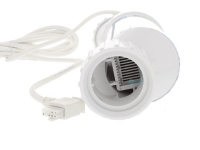https://hayward.com/patent
Here are Hayward's patents.
There are no patents for a method of splicing two wires together to prevent non-genuine cells from working.
Whatever the method, any cell that Hayward produces should be compatible with any system produced by Hayward.
While manufacturers can take measures to discourage the use of aftermarket parts, they cannot legally restrict their use for non-warranty repairs, nor can they void a warranty solely because an aftermarket part was used, according to the Magnuson-Moss Warranty Act.
The Magnuson-Moss Warranty Act, a federal law passed in 1975, governs consumer product warranties, requiring warrantors to provide detailed information about warranty coverage and limiting their ability to disclaim implied warranties.
The Act aims to protect consumers from deceptive warranty practices and ensure they have access to clear and accurate information about warranty coverage.
Key Provisions:
Disclosure Standards: The Act directs the Federal Trade Commission (FTC) to establish disclosure standards for written warranties, ensuring consumers understand the terms and conditions.
"Full" Warranty Standards: It specifies standards for what constitutes a "full" warranty, which offers a higher level of consumer protection.
Limited Disclaimer of Implied Warranties: The Act limits the ability of warrantors to disclaim implied warranties, such as the implied warranty of merchantability and fitness for a particular purpose.
Consumer Remedies: It establishes consumer remedies for breach of warranty or service contract obligations, including the ability to sue for breach of warranty.
Aftermarket Parts: The Act prevents manufacturers from voiding a vehicle's warranty due to the use of aftermarket parts unless they can prove the aftermarket part caused or contributed to the failure.
Fair Competition:
The law supports competition by allowing aftermarket parts manufacturers to offer compatible alternatives without interference.



